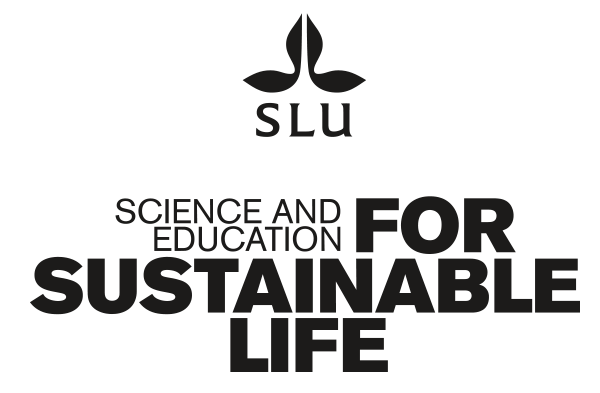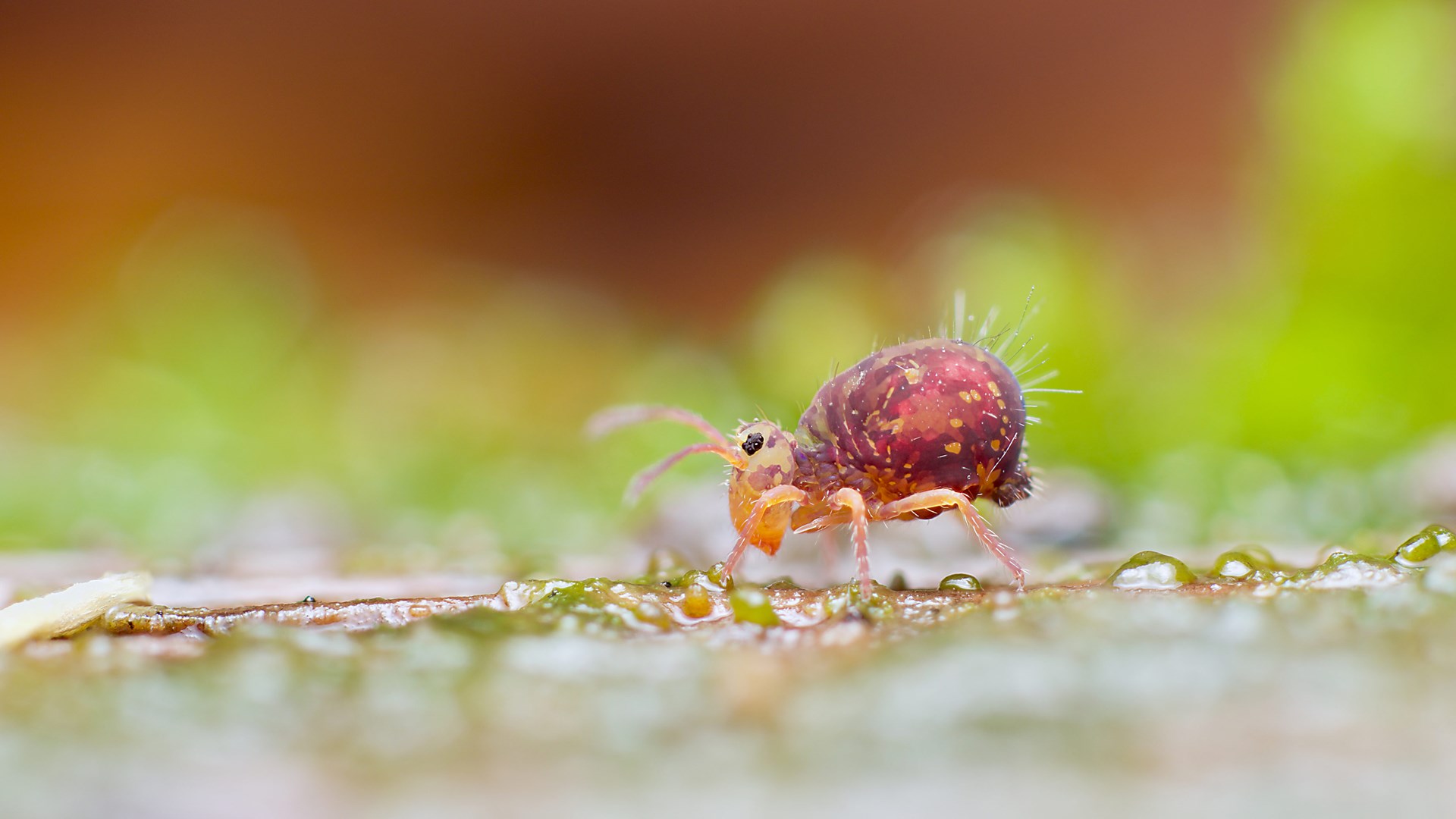
Many springtails have a tail-like appendage called a furcula that allows them to jump a hundred times their own length! For example, the round Dicyrtomina ornata.
Photo: Andy Murray
We must look after the tiniest farm workers. Ecosystems and our food supply depend on things that wriggle and crawl
As you take a bite of apple pie, you might send a silent thanks to the farmer. But don’t forget all the others who lent a hand in the orchard and on the fields. Bumblebees, ladybirds, earthworms and many other critters have important jobs both above and below ground.
![]()
A bumblebee buzzes away from a small scabious flower along the verge of the road. But it’s not just any flower – it’s a part of Juliana Dániel Ferreira’s experiment. She’s planted small scabious flowers with fluorescent powder on them – red on one side of the road and blue on the other.
‘It’s a way of studying how flower-visiting insects move in road environments,’ Juliana explains. ‘The powder mimics pollen, sticking to the bumblebees when they land on them.’
Pollinators are vital to our food supply. Without them, there would be no apples. Another ingredient in our imaginary pie is rapeseed oil. Research shows that pollination enhances the rapeseed harvest, as well as that of other flowering crops, such as faba beans.
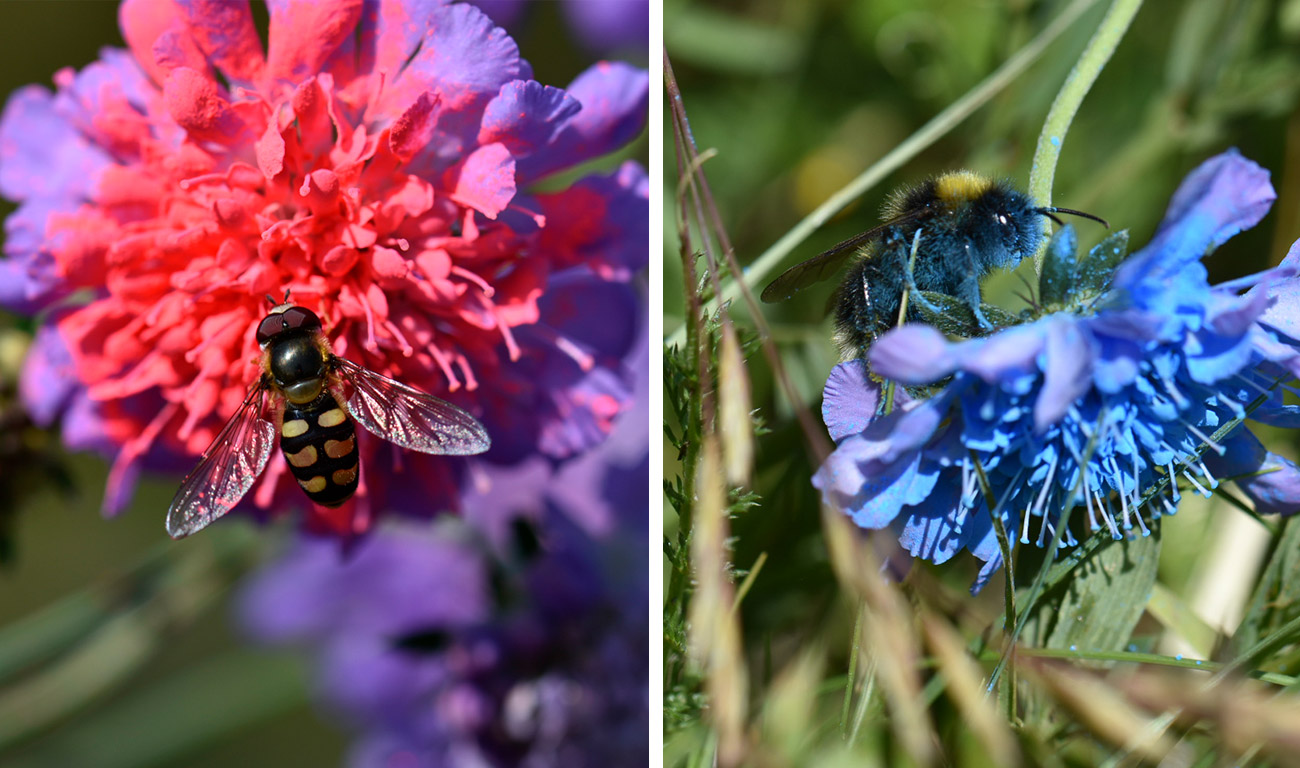
The hoverfly's pile turns red while the bumblebee's gets blue because Juliana Dániel-Ferreira has coated the flowers with fluorescent powder to allow the researchers to see how the pollinators move between the flowers. Photo: Juliana Dániel-Ferreira
So what does a road verge have to do with fields with flowering crops and apple orchards? Well, if insects are to find their way there and help us out with pollination, they have to be able to survive in the landscape. And many modern agricultural landscapes have a dearth of flowers. Large swathes of meadow and pastureland have vanished in recent decades. Juliana and her colleagues are investigating how road verges work as habitats.
Juliana continues, ‘The results showed that all verges, no matter how many flowering species they contained, facilitate insects’ movement through the landscape. But if there was a lot of traffic, it put the queens at risk in the spring.’
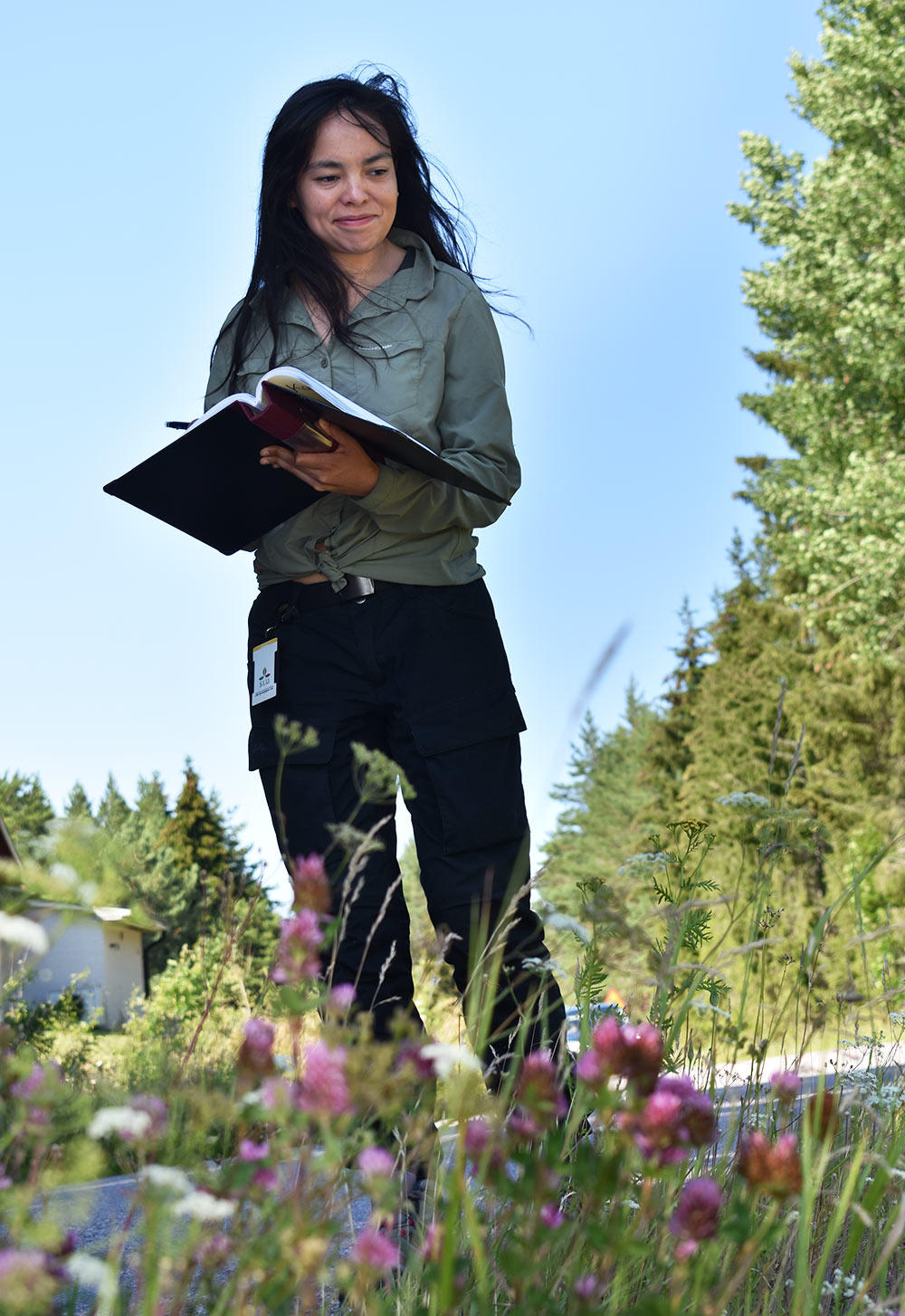
Juliana Dániel-Ferreira. Photo: Chloë Raderschall
![]()
Underground activity is crucial for nutrients
We leave the verge behind and walk into a field. This is where the wheat for your pie crust grows. The crop is dependent on the nutrients in the soil, and thus benefits from an array of organisms.
Kaisa Torppa has dug a pit and is now sifting through the soil in search of earthworms. She pours a mustard solution into the pit, sending its irritating sting through the soil to trigger the deeper-living worms to burrow up towards the surface away from it.
‘Their burrows can go as deep as two metres and they’ll retreat as far down as they can when they feel us digging,’ she explains.
There is no question that earthworms are important to the soil. They eat soil and dead organic material, with their castings providing nutrients for plants. Their burrows also help loosen up the soil. A healthy field can have up to 400 worms in one square metre! Ploughing is not good for earthworms; it destroys their passages and can kill or injure the worms. So less tilling of the soil, for example by growing perennial crops, is good for worms. Research has also shown that legumes and horse manure are beneficial for worms.
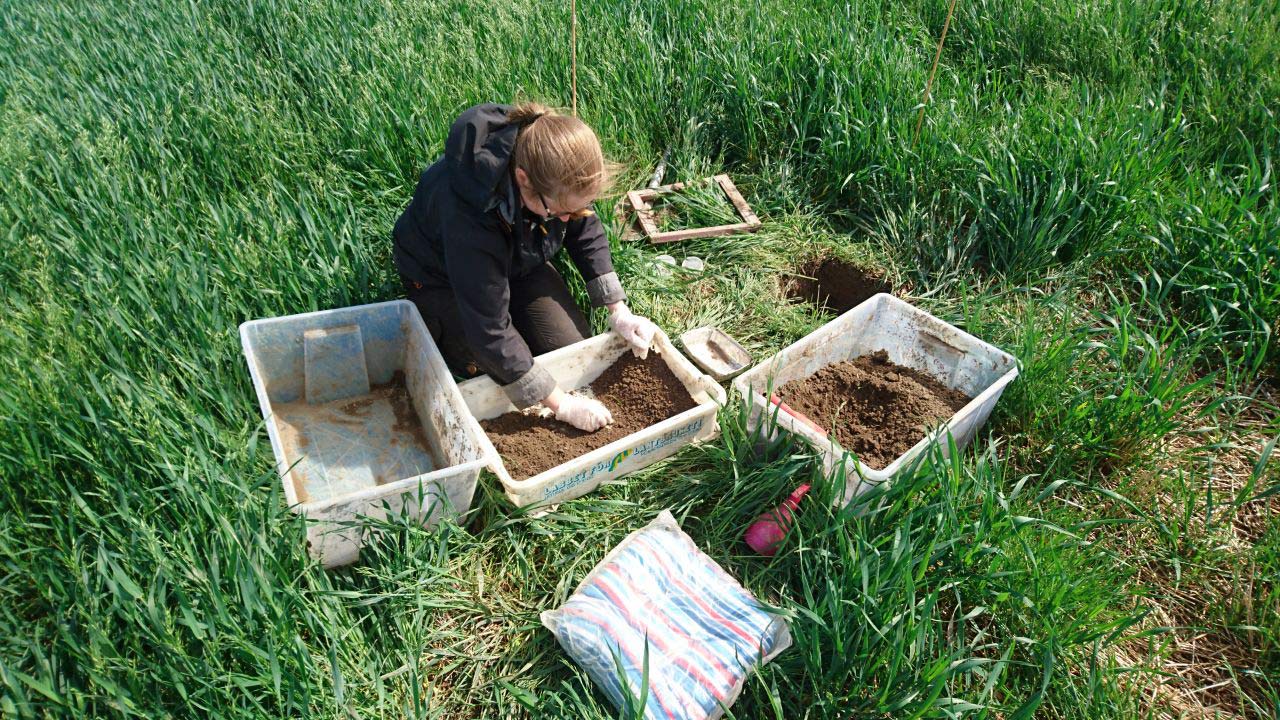
Kaisa Torppa carefully sifts through the soil in search of earthworms. Photo: Mats Ittonen
But earthworms are not alone in the soil. Nature films that look at life below the soil are rare, but the diversity there can easily be compared with that of the Serengeti plain or the Amazon rain forest. You can find thousands of species and millions of individuals in a tiny space. Just one teaspoon of soil can contain 1 billion bacteria and an unbelievable 200 metres of fungal hyphae.
Just a teaspoon of soil can contain one billion bacteria and an unbelievable 200 metres of fungal hyphae.
The soil is home to springtails, which eat fungi and bacteria. They are tiny animals that can come in a variety of shapes, colours and patterns. It is also home to mites, which eat fungi or can be predators, eating springtails and other small animals.
Nematodes, or roundworms (an apt name), are another common group. Many are beneficial, eating fungi or bacteria. Some larger nematodes eat other nematodes. Some soil-living fungi are not only food, but are also predators: Some can form snares with their mycelia. When a nematode passes by, they can tighten the snare and suck the nutrients out of their prey. All this teeming life is vital for the health of the soil.

Many springtails have a tail-like appendage called a furcula that allows them to jump a hundred times their own length! For example, the round Dicyrtomina ornata.
Photo: Andy Murray
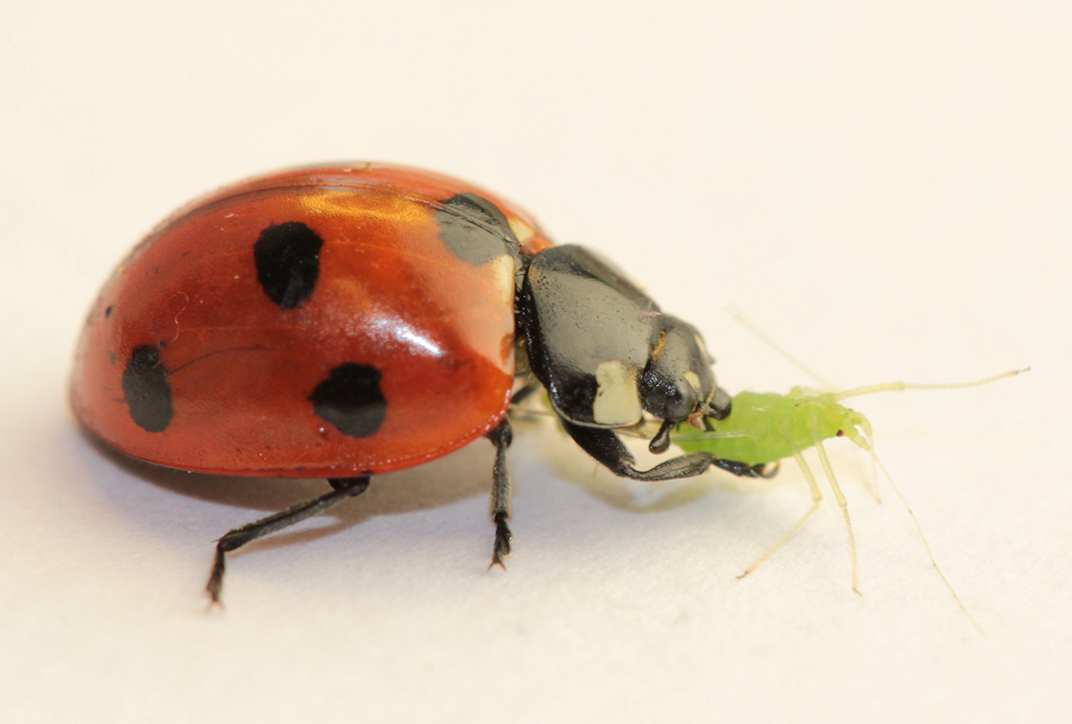
Voracious! A ladybird can eat 50 aphids in one day.
Photo: Chloë Raderschall
Creatures that provide biological pest control
There are also nematodes that eat the roots of crops – which is not as good for us. Other organisms that cause problems for our farming are aphids, which suck the juices from leaves, and various weeds that compete for sunlight and water. But here, too, we have allies among the creeping things because of their lifestyles. Ladybirds eat aphids, and various species of ground beetles can eat aphids or weed seeds, providing biological pest control for our fields. So they also deserve thanks for that pie.
Researcher Mattias Jonsson peers into the pitfall trap and sees that he has caught a rain beetle. This is one of the natural enemies that can help us to protect our crops.
‘Research shows that biological pest control is more reliable in a varied agricultural landscape with natural grasslands and several different types of crops,’ he explains. ‘In these environments, ground beetles, wolf spiders and ladybirds can find places to overwinter, protection from disturbances, and more food than in settings where there are only a handful of crops.’
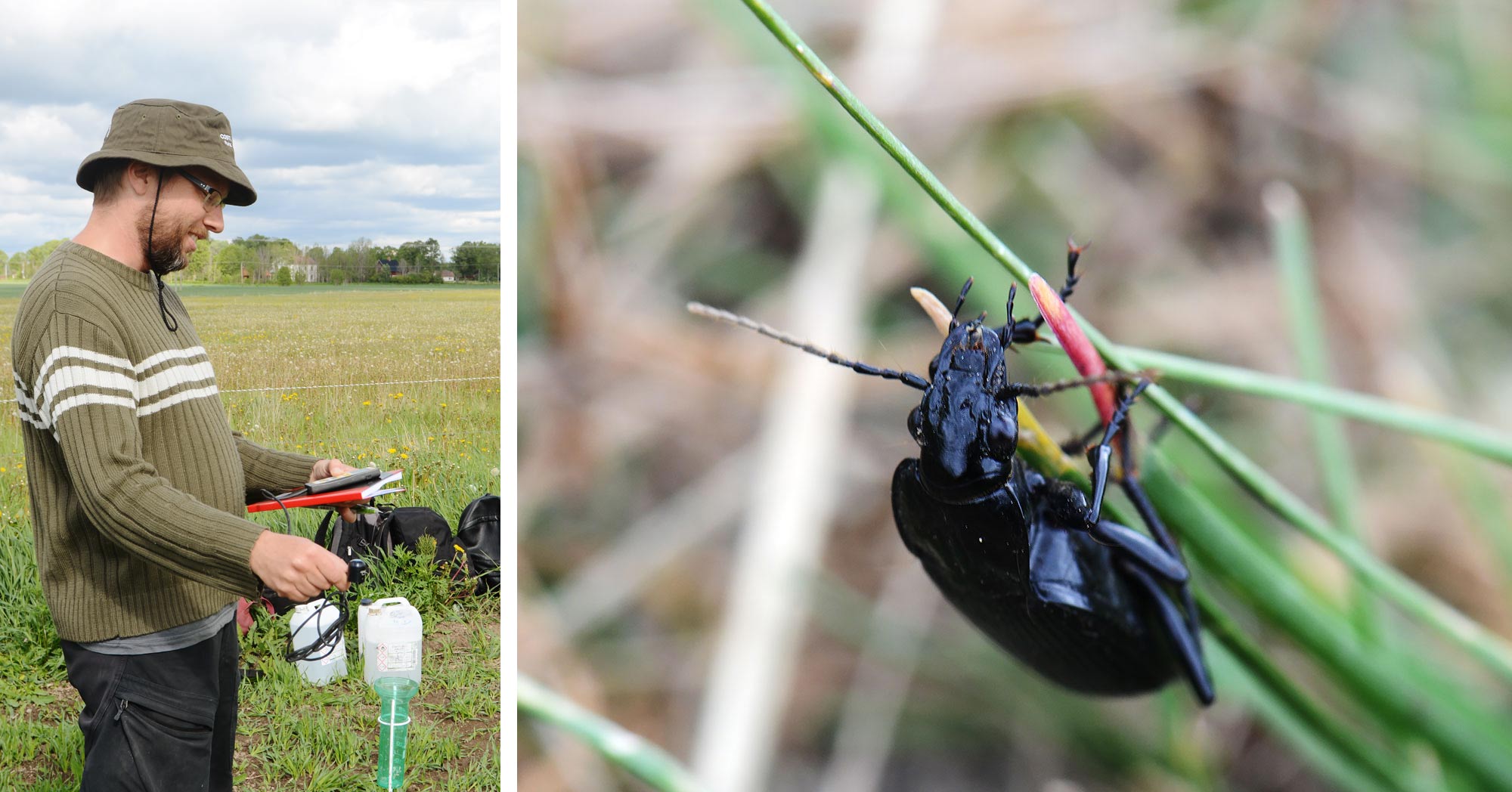
To the left: Mattias Jonsson out in the field. To the right: Rain beetle (Pterostichus melanarius) – a ground beetle that eats aphids. Photos: Cajsa Lithell and Mattias Jonsson
![]()
SLU researches beneficial diversity in the agricultural landscape
Biodiversity contributes to various ecosystem services, such as biological pest control, pollination, nutrient cycling and harvests. Diversity also increases resistance to climate change in cultivated and natural ecosystems. SLU studies the benefits provided by various organisms and how we can promote them. We do this through experiments and studies in entire landscapes, fields, greenhouses and in laboratories.
Some of our agricultural experiments are longitudinal and have lasted for decades. They are particularly important in order for us to understand what happens in the land and with harvests over a long time and in a changed climate. Using advanced models, scientists draw conclusions about the interplay between landscapes, cultivation methods, biodiversity, climate and ecosystem services.
![]()
Story:
Anna Lundmark, e-mail, +46 (0)18-67 23 35
Department of Ecology
Press / research contact:
Juliana Dániel-Ferreira, Postdoctor, e-mail
Department of Urban and Rural Development
Kaisa Torppa, Doctoral Student, e-mail
Department of Ecology
Mattias Jonsson, Senior Lecturer, e-mail
Department of Ecology
Production:
SLU Division of communication, e-mail
The content is free to share in its original form if the source/url is cited.
![]()
An eye for science. We see the world through our own eyes. Sometimes we need a microscope to see the bigger picture, other times patterns are clearer at a distance. Beauty can catch your eye from the bottom of a petri dish, during a walk in the woods, or in a new data series. SLU brings together people who have different perspectives, but they all have one and the same goal: to create the best conditions for a sustainable, thriving and better world.
